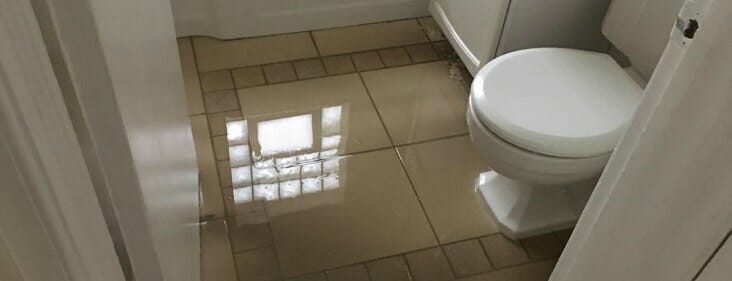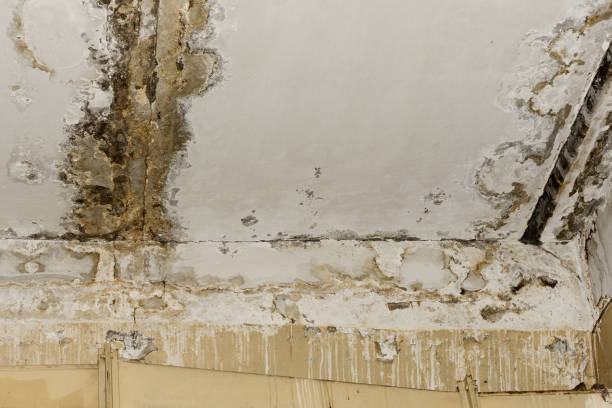Bathroom Leaks as well as How to Deal with Them
Bathroom Leaks as well as How to Deal with Them
Blog Article
Nearly everybody seems to have their private perception with regards to How to Repair and Prevent Bathroom Water Damage?.

Water damage often occurs in the shower room due to the water made use of day-to-day. Sometimes, the damage could be a little mold from the shower. Other times, it's enormous damage on your flooring. Whatever it is, it is constantly excellent to recognize the reason and prevent it before it happens.
This guide will go through a few of the typical root causes of water damage in the shower room. We will also examine what you can do to avoid these causes from harming your shower room. Allow's dive in.
5 Usual Sources Of Water Damage in Bathrooms
These are the common reasons you would have water damage in your restrooms as well as exactly how you can identify them:
Ruptured or Dripping Pipelines
There are lots of pipes bring water to different parts of your restroom. Some pipes take water to the toilet, the sink, the taps, the shower, and several various other areas. They crisscross the tiny location of the shower room.
Every so often, these pipes could get corroded and also ruptured. Other times, human action could trigger them to leak. When this occurs, you'll find water in the corners of your bathroom or on the wall.
To spot this, keep an eye out for gurgling wall surfaces, mold and mildews, or mildew. Call an expert emergency plumber to fix this when it takes place.
Splits in your wall surface ceramic tilesv
Restroom wall floor tiles have actually been particularly created for that function. They safeguard the wall from moisture from individuals taking showers. Nevertheless, they are not unbreakable.
Sometimes, your washroom wall surface ceramic tiles crack and also permit some wetness to seep into the wall surface. This might potentially damage the wall surface if you don't take any activity. If you observe a fracture on your wall floor tiles, fix it instantly. Do not wait up until it destroys your wall surface.
Overruning bathrooms and sinks
As human beings, in some cases we make mistakes that can trigger some water damage in the bathroom. As an example, leaving your sink tap on can trigger overflowing and also damage to other parts of the shower room with moisture.
Additionally, a malfunctioning toilet can trigger overruning. For instance, a broken bathroom deal with or various other parts of the cistern. When this takes place, it might harm the floor.
As quickly as you observe an overflowing sink or bathroom, call a plumber to assist deal with it promptly.
Roofing system Leakages
In some cases, the trouble of water damage to the restroom could not come from the shower room. As an example, a roofing system leakage could trigger damages to the bathroom ceiling. You can identify the damages done by taking a look at the water spots on the ceiling.
If you locate water stains on your ceiling, inspect the roof covering to see if it's damaged. Then, call an expert to assist address the issue.
Excess Wetness
It's trendy to have that long shower and sprinkle water while you hem and haw and act like you're executing, but in some cases these acts can cause water damage to your restroom.
Spraying water around can cause water to visit edges and also form molds. Enjoy how you spread excess wetness around, and also when you do it, clean it up to prevent damage.
Final thought
Water damage to your washroom can be irritating. Nevertheless, you can manage it if you protect against some of the causes pointed out in this overview. Call a specialist emergency plumbing if you observe any kind of severe damage.
Common Causes of Water Damage in a Bathroom
Water damage can appear virtually anywhere in your home, but bathrooms and basements are the two most common areas. It’s easier to spot causes and signs of water damage in an unfinished basement, but that doesn’t mean it’s any less severe to have water damage occur in your bathroom.
Spotting Signs of Bathroom Water Damage
The bathroom is probably the most common place where you’ll use water in your home. Because of this, there’s a relatively high risk of sustaining water damage. The longer water damage goes untreated, the worse it can get. Therefore, you need to know what signs to look for and deal with any damage as soon as possible.
There are often items like rugs, bottles, towels, and so on crammed in every corner of the typical bathroom, which can trap moisture and hide budding problems. But what usually causes the most water damage in a bathroom? How can you spot it, especially with so many items in the way? This article addresses several common ways to notice, prevent, or fix bathroom water damage.
A Recurring or Persistent Musty Odor
Wherever there’s water damage, you almost always find small spots of mold, or even a full-blown infestation. When you leave mold to thrive and grow, it creates a stinking, musty odor that’s pretty hard to miss. Don’t leave musty smells unaddressed—try to find the source so that you can have it repaired before more damage occurs.
Damaged Grout or Caulk
When these sealing agents fail, virtually nothing prevents water from seeping past the barrier, causing water damage and mold growth underneath wall and flooring tiles. Damaged showerheads, spigots, grout, or caulking, combined with excessive moisture, create the perfect environment for mold to thrive.
Loose Tiles or Spongy Floors
Moldy and water-damaged walls make it more difficult for tiles to stay in place, which can cause them to become loose. In addition, persistent moisture on a bathroom floor can result in water damage to the subflooring layer, causing it to degrade, lose integrity, and feel spongy.
Stubborn Growth
If there’s visible mold in your bathroom that you’ve removed more than once, the most likely reason it keeps coming back is a deeper infestation in the walls or floors. It’s critical to deal with this problem immediately to prevent further damage and new or worsening health issues.
https://advantaclean.com/blog/common-causes-of-water-damage-in-a-bathroom/

Common Causes of Water Damage in a Bathroom
Water damage can appear virtually anywhere in your home, but bathrooms and basements are the two most common areas. It’s easier to spot causes and signs of water damage in an unfinished basement, but that doesn’t mean it’s any less severe to have water damage occur in your bathroom.
Spotting Signs of Bathroom Water Damage
The bathroom is probably the most common place where you’ll use water in your home. Because of this, there’s a relatively high risk of sustaining water damage. The longer water damage goes untreated, the worse it can get. Therefore, you need to know what signs to look for and deal with any damage as soon as possible.
There are often items like rugs, bottles, towels, and so on crammed in every corner of the typical bathroom, which can trap moisture and hide budding problems. But what usually causes the most water damage in a bathroom? How can you spot it, especially with so many items in the way? This article addresses several common ways to notice, prevent, or fix bathroom water damage.
A Recurring or Persistent Musty Odor
Wherever there’s water damage, you almost always find small spots of mold, or even a full-blown infestation. When you leave mold to thrive and grow, it creates a stinking, musty odor that’s pretty hard to miss. Don’t leave musty smells unaddressed—try to find the source so that you can have it repaired before more damage occurs.
Damaged Grout or Caulk
When these sealing agents fail, virtually nothing prevents water from seeping past the barrier, causing water damage and mold growth underneath wall and flooring tiles. Damaged showerheads, spigots, grout, or caulking, combined with excessive moisture, create the perfect environment for mold to thrive.
Loose Tiles or Spongy Floors
Moldy and water-damaged walls make it more difficult for tiles to stay in place, which can cause them to become loose. In addition, persistent moisture on a bathroom floor can result in water damage to the subflooring layer, causing it to degrade, lose integrity, and feel spongy.
Stubborn Growth
If there’s visible mold in your bathroom that you’ve removed more than once, the most likely reason it keeps coming back is a deeper infestation in the walls or floors. It’s critical to deal with this problem immediately to prevent further damage and new or worsening health issues.
https://advantaclean.com/blog/common-causes-of-water-damage-in-a-bathroom/
Do you like reading about How to Repair and Prevent Bathroom Water Damage?? Try leaving a short review directly below. We will be interested to hear your feelings about this write-up. Hoping to see you back again in the future. Make sure you take a moment to promote this write-up if you enjoyed reading it. Thanks a lot for your time spent reading it.
Schedule Services Report this page